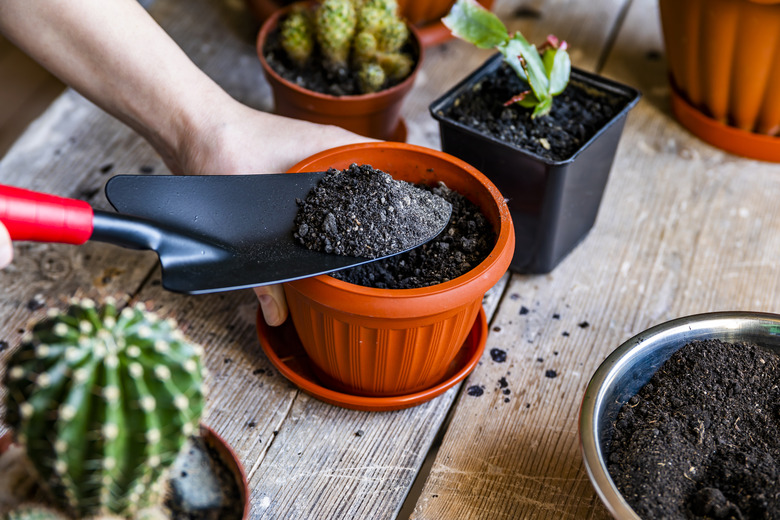How To Store Extra Potting Soil
We may receive a commission on purchases made from links.
It's tough to pass up potting soil sales to stock up your supply so you're always prepared for a gardening project, but finding a storage spot for all the extra potting soil or keeping the leftovers safe during the winter can be difficult. Whether you make potting soil yourself or buy bags of potting soil at the store, proper storage keeps it healthy and ready to go when you need it.
Importance of Potting Soil Storage
Importance of Potting Soil Storage
Why does potting soil storage matter? You might not go to extra lengths to protect your garden soil outside, but proper storage indoors helps retain potting soil nutrients and prevent issues with the soil. If it's exposed to moisture while it's in soil storage bags, it can develop mold that could potentially hurt your plants the next time you use the soil. Bugs can also infest the potting soil, which can cause issues with plants you grow in it. The final issue is simply keeping your storage space clean since improperly stored potting soil can spill.
Potting Soil Storage Containers
Potting Soil Storage Containers
The bags in which your potting soil comes are fine for temporary transport to your home and for storage if you're going to use it soon, but they're not ideal for long-term storage. They aren't waterproof, so moisture and contaminants can get into your potting soil while you store it. The bags are also very thin, which means they can tear easily and create a major mess in your garden shed or garage.
Instead, invest in plastic storage totes with secure lids. Plastic does a good job of protecting the contents from moisture. You can stack the containers to save space if you have multiple bins of potting soil. You can either keep the soil in the bags and put them inside the container or dump the potting soil out of the bags directly into the container.
Sanitizing the Containers
Sanitizing the Containers
Since the purpose of proper potting soil storage is to prevent contamination, it makes sense to clean the storage containers before using them. Rinse the plastic totes and then fill them with one part bleach and nine parts water. Give it about 30 minutes to soak before draining most of the water, putting it down the drain and not dumping it in the grass where it can kill vegetation. Scrub the container with a little remaining bleach water and rinse it out well. Wait until it is completely dry before you put your potting soil in it.
Preparing the Potting Soil
Preparing the Potting Soil
Before you pack away your potting soil, you want it to be dry. If it's wet, keep the bag or container open in a dry space. Stir it around occasionally to let out all the moisture.
If you have multiple partial bags of potting soil, you can combine them into fewer bags. Use duct tape to seal open bags of potting soil if you plan to store them inside the bags. Place the bags inside the plastic storage tub or dump the soil out of the bags and into the storage tub.
Place the lid securely on the tub, ensuring that it snaps closed on all sides. If you want an extra-tight seal, you can put duct tape along the lid edge. All edges should be covered with duct tape for this to be effective. Labeling the containers is also a good idea to help you find the potting soil when you need it to replace old soil or plant new flowers.
Where to Keep Potting Soil
Where to Keep Potting Soil
The best spot for your potting soil is a dry area. Basements, sheds, and outdoor areas often get humid and might affect the potting soil quality. Garages are sometimes drier than other areas, or you can store the tubs of potting soil in an extra room inside your home.
